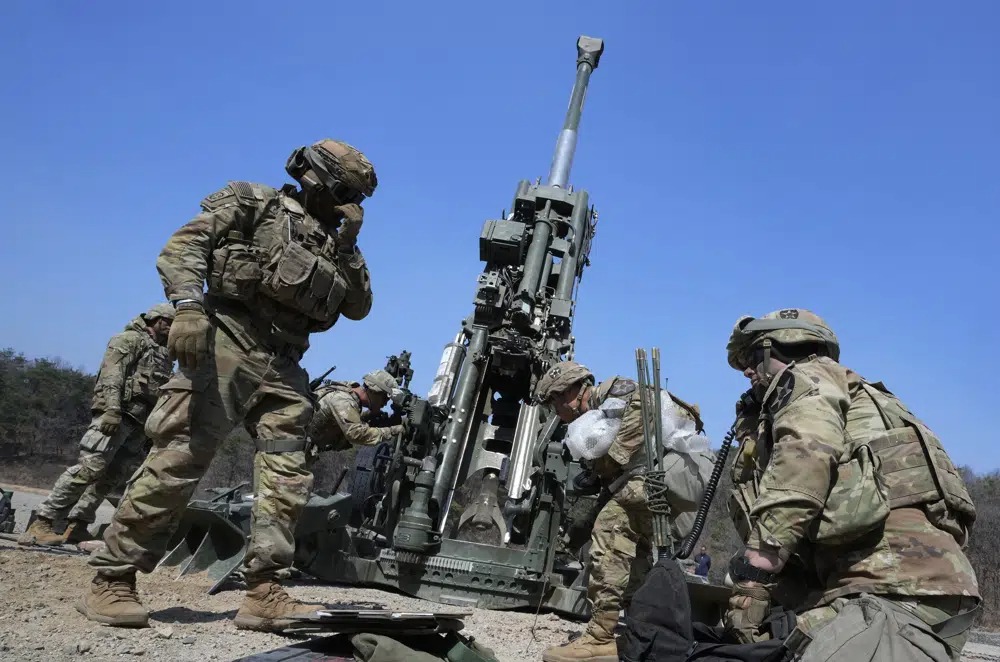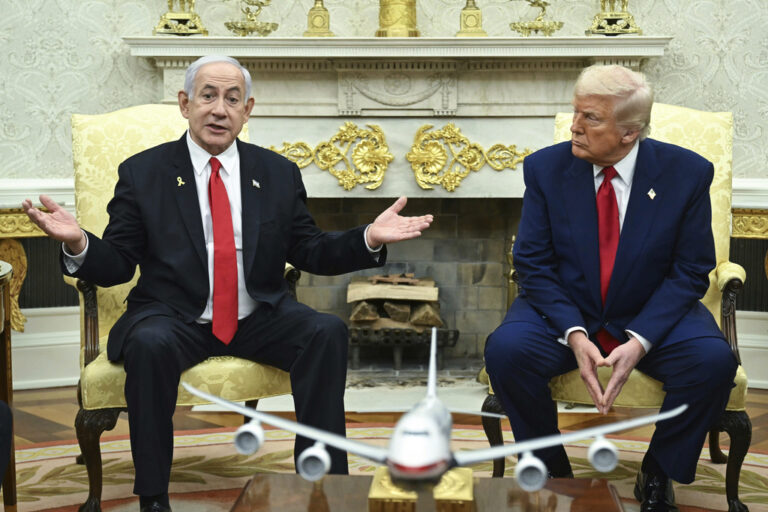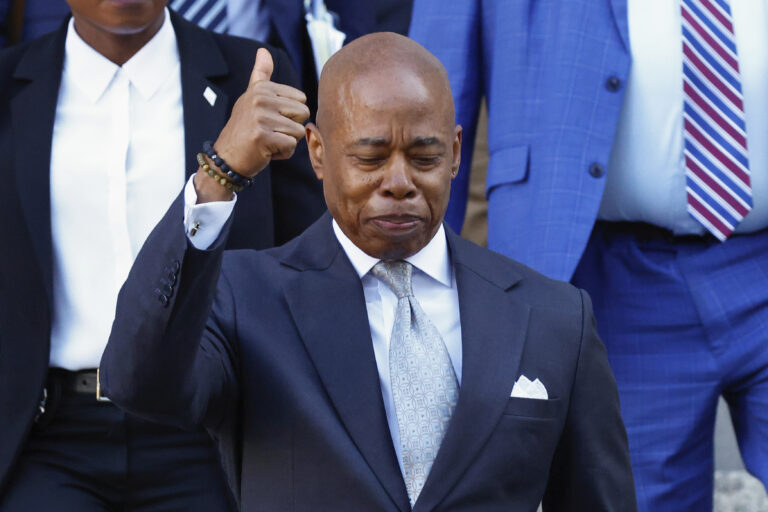North Korea on Monday described its latest ballistic missile launch as a simulated nuclear attack on South Korea as leader Kim Jong Un called for his nuclear forces to sharpen their war readiness in the face of his rival’s expanding military exercises with the United States.
The report by Pyongyang’s official Korean Central News Agency came after the South Korean and Japanese militaries on Sunday detected North Korea firing a short-range ballistic missile into waters off its eastern coast. The launch came less than an hour before the United States flew long-range B-1B bombers for joint training with South Korean warplanes as part of the allies’ biggest combined training in years, which the North has condemned as a rehearsal for a potential invasion.
KCNA said the missile, which flew about 800 kilometers (500 miles), was tipped with a mock nuclear warhead and that the test reaffirmed the reliability of the weapon’s nuclear explosion control devices and warhead detonators. It said the launch was the final step of a two-day drill that also involved nuclear command and control exercises and training military units to switch more quickly into nuclear counterattack posture.
Kim, who state media photos showed attended the missile launch with his daughter, instructed his military to consistently conduct such drills simulating actual war conditions to make the units “more perfectly prepared in their active posture of making an immediate and overwhelming nuclear counterattack anytime.”
Saying that his enemies are getting “ever more pronounced in their moves for aggression,” Kim urged the need to bolster his nuclear deterrent “exponentially” and laid out unspecified “strategic tasks” for further developing his nuclear forces and improving their war readiness, KCNA said. This indicated that the North could up the ante in its weapons demonstrations in coming weeks or months.
Sunday’s short-range launch was the North’s fifth missile event this month and the third since the U.S. and South Korean militaries began joint exercises on March 13. The drills, which are to continue through Thursday, include computer simulations and field exercises tjat are the biggest of their kind since 2018.
The North’s flurry of tests this year included a slew of short-range missiles fired from land vehicles, cruise missiles launched from a submarine and two different flight tests of intercontinental ballistic missiles fired from its main airport near the capital, Pyongyang, as it tries to demonstrate a dual ability to conduct nuclear attacks on South Korea and the U.S. mainland.
The latest ICBM test last Thursday came hours before South Korean President Yoon Suk Yeol traveled to Tokyo for a summit with Japanese Prime Minister Fumio Kishida, which was partially aimed at rebuilding security ties between the often-estranged U.S. allies in the face of North Korean nuclear threats.
North Korea already is coming off a record year in testing activity, with more than 70 missiles fired in 2022, as Kim accelerates a nuclear push aimed at forcing the United States to accept the idea of the North as a nuclear power and negotiating badly needed sanctions relief from a position of strength.
The North last year had also dialed up its weapons demonstrations when the allies were conducting joint exercises, including a slew of missile and artillery firings it described as simulated nuclear attacks on South Korean and U.S. targets. One of the missiles the North fired in November flew in the direction of South Korea’s populated Ulleung island, triggering air raid sirens and forcing residents to evacuate. South Korea quickly responded by launching its own missiles in the same border area off the Korean Peninsula’s eastern coast.
North Korea has long portrayed U.S.-South Korean military drills as rehearsals for an invasion, although the allies describe those exercises as defensive. Many experts say North Korea uses its rivals’ drills as a pretext to aggressively expand its nuclear arsenal and overall military capability.
In New York, the U.N. Security Council scheduled an emergency open meeting Monday morning at the request of the United States, United Kingdon, Albania, Ecuador, France and Malta in response to North Korea’s ICBM launch March 16.
The U.N. Security Council held an informal meeting Friday at which the U.S., its allies and human rights experts shone a spotlight on what they described as the dire rights situation in North Korea. China and Russia denounced the meeting as a politicized move likely to further escalate tensions on the Korean Peninsula.
North Korea’s U.N. Mission issued a statement Sunday calling the meeting about “our non-existent `human rights issue’” unlawful. It also said the U.S. held Friday’s meeting “while staging the aggressive joint military exercise which poses a grave threat to our national security.”
(AP)











